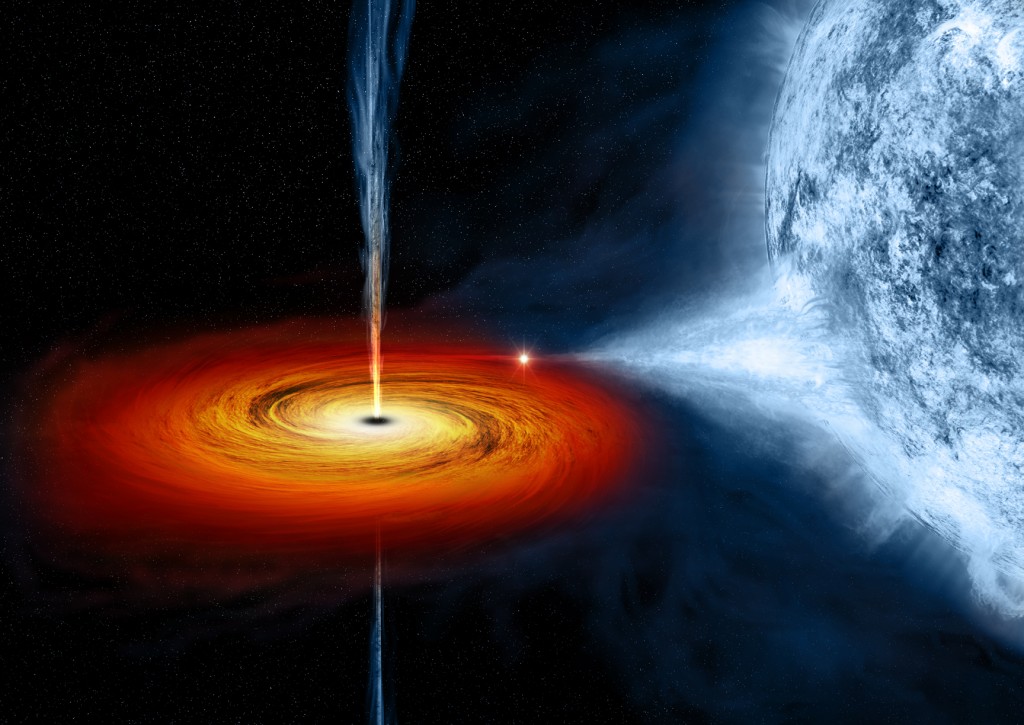Introduction

The detection of gravitational waves by the Laser Interferometer Gravitational-Wave Observatory (LIGO) has confirmed the existence of merging binary black hole systems (LIGO Collaboration 2016). Evidence suggests that these systems form through various processes, one of which is through high-mass x-ray binaries (HMXBs). HMXBs are an intermediate stage of stellar binary evolution in which one star is massive (> 10 solar masses) and the other star has already become a black hole. An artist's drawing of such a system is pictured in the above image. X-rays are emitted from the black hole when it accretes matter from the star. For a comprehensive overwiew of HMXBs and their evolution into binary black holes, please refer to Tauris & Heuvel 2003.
Project Motivation: HMXBs are observed, but none of them are anticipated to become binary black hole mergers that we can detect with LIGO. However, we confirm in this project that almost all simulated LIGO binary black hole mergers evolve from observable HMXBs. The ultimate purpose of this project is to understand why we do not observe these systems in the sky with x-rays.